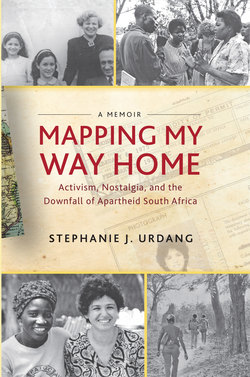Читать книгу Mapping My Way Home - Stephanie Urdang - Страница 6
На сайте Литреса книга снята с продажи.
ОглавлениеAcknowledgments
THIS MEMOIR WAS CONCEIVED and reconceived over many years. During that time I have benefited from the support of friends. I can’t express my gratitude enough for the input of Gloria Jacobs and Jane Rosenman, whose superior editing skills were critical to the reshaping of Mapping My Way Home. Special thanks, too, to Jennifer Davis, Alcinda Honwana, Gail Hovey, Karen Judd, and Teresa Smart, who read the manuscript at different stages and whose insights and comments were invaluable. I am also grateful to the many others who encouraged and supported me through the long process of bringing this memoir to fruition, among whom are my women’s group of forty-five years—Suzette Abbott, Jennifer Davis, Janet Hoope,r and Gail Hovey—as well as Michelle Fine, Pippa Green, Hanaa Hamdi, Hermione Harris, Richard Knight, Judith Marshall, Ann McClintock, Margaret Marshall, Barbara Reisman, and Janis Zadel.
And most especially, there are my stalwart cheerleaders, husband John Woodburn and daughter Kendra Urdang, who lived with this book through good times and bad, with my moods to match. Their support means the world to me.
Martha Cameron, through her scrupulous editing, spotted a number of inaccuracies that saved me embarrassment. On that note, I am the only one responsible for all remaining errors and inaccuracies. Thanks as well go to Martin Paddio and Michael Yates at Monthly Review Press for their enthusiasm for the project. It was a pleasure to work with all three.
There are those who I need to thank posthumously. A number of my friends and family who were part of my story, even if not included in my book, died while I was writing it. Some, like my parents and my sister Leonie, feature in my memoir, as do Becky Reiss and Lina Magaia. Others, even though an important part of my story, were not included. Among the latter are Danish anthropologist Jette Bukh, with whom I stayed in Guinea-Bissau after independence and who became a close friend; David Emanuel, fellow southern African, whose wisdom and support saw me through my cancer and Kendra’s birth; and Anthony Lewis, whose friendship, humor, and generosity meant a lot to me. Particular memories are for Eve and Tony Hall. The fleeting idea for a memoir became grounded through discussions with Tony at Matumi, their home outside of Nelspruit, after they returned to South Africa. His enthusiasm for my book was infectious. I first met Eve and Tony in Nairobi in 1973 on my travels in Africa. Introduced through a mutual friend, I arrived at their house for tea one Saturday afternoon and stayed for six weeks. They had gone into exile in the early 1960s with their three young sons, after Eve had served a six-month sentence for promoting the banned ANC with a leaflet and poster campaign, and Tony, a journalist, was no longer allowed to practice his craft. I slipped into their lives and we remained close friends until their untimely deaths: Eve from breast cancer in 2007 at age seventy; Tony at age seventy-one from a heart attack a few months later, in 2008. All are sorely missed.
Friends provided beautiful writing retreats. I returned often to idyllic Matumi, my computer on a small table in front of “my” bedroom, a view of the stunning valley below; Margaret Marshall and Anthony Lewis’s house overlooking a pond on Martha’s Vineyard was a yearly treat; Pippa Green’s house in Cape Town gave me a magnificent view of Table Mountain as I worked; Hermione Harris’s house in London was home from home after my parents died. In addition, I had the opportunity to spend time at the indescribably wonderful Blue Mountain Center for writers, artists, and activists on a lake in the Adirondacks.
My grateful thanks to Alice Brown, director of the Ford Foundation regional office in southern Africa, which provided a grant for research and travel to South Africa and Mozambique in 2011.
Note: A few of the names of people who appear in this book have been changed.
